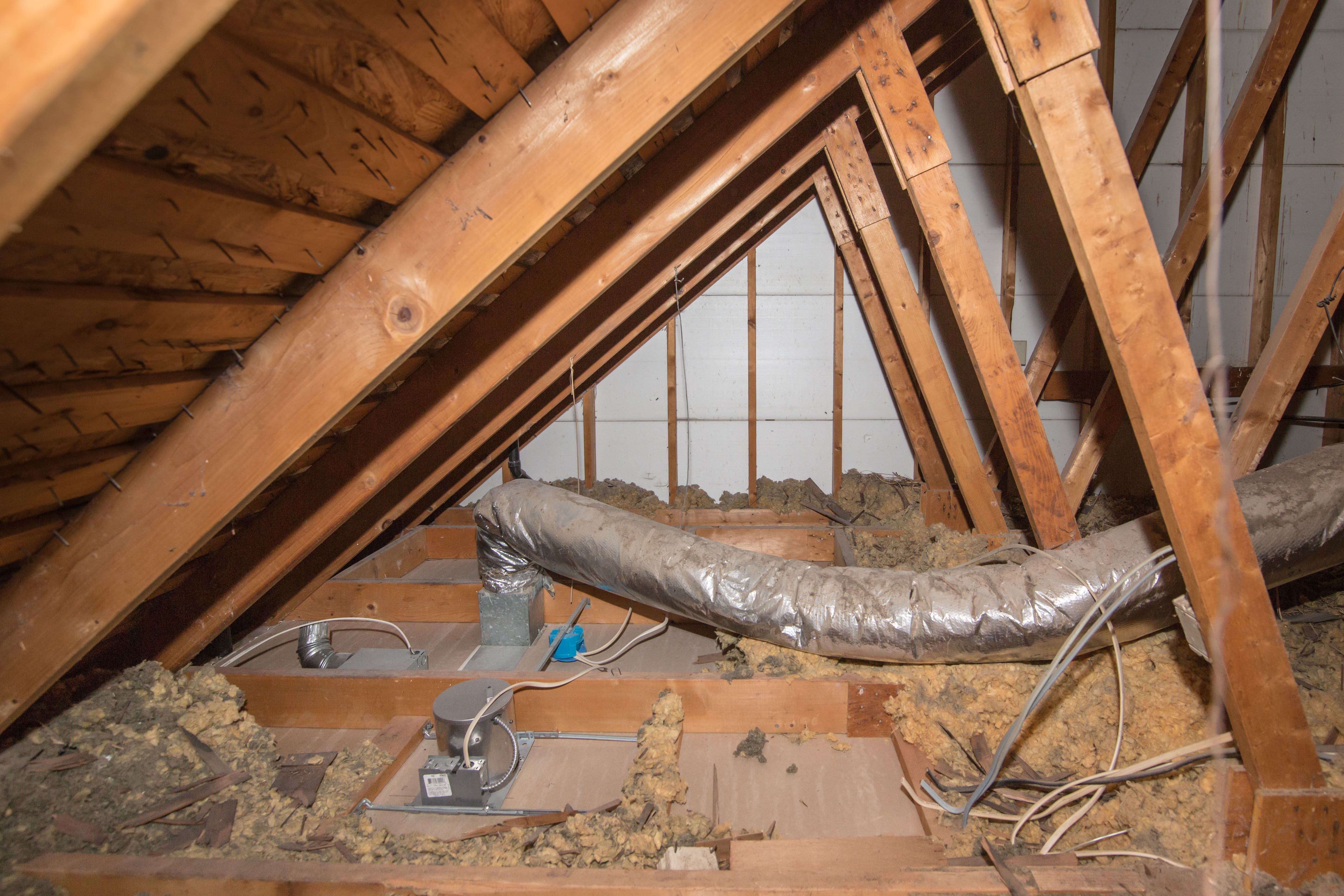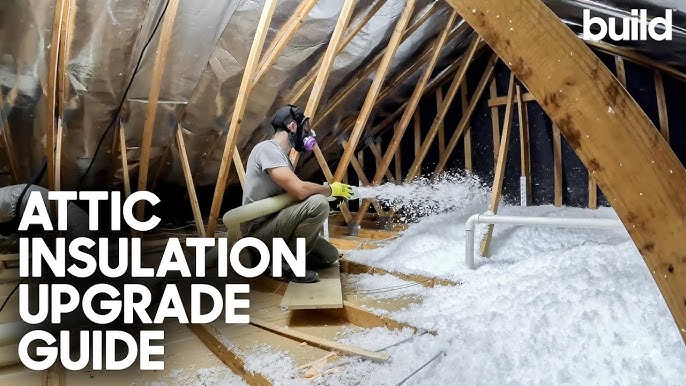The Ultimate Guide to Selecting the Right Attic Insulation DFW Solutions
Wiki Article
Discover the Various Kinds Of Attic Insulation and Their Unique Advantages for Your Home's Energy Efficiency

Fiberglass Insulation
Fiberglass insulation is among one of the most frequently used materials for attic room insulation as a result of its excellent thermal efficiency and cost-effectiveness. Made up of little glass fibers, this product effectively catches air, producing an insulating barrier that helps keep consistent interior temperature levels. Its high R-value per inch makes it specifically effective at resisting warmth transfer, which is critical for energy preservation in homes.
Setup of fiberglass insulation is fairly straightforward, usually readily available in batts or loose-fill types, suiting various attic room arrangements. Additionally, it is non-combustible and immune to wetness, lowering the threat of mold growth. This resilience adds to its long life, making fiberglass a sensible long-lasting financial investment for property owners.
Moreover, fiberglass insulation is commonly produced from recycled products, which boosts its eco-friendliness. The material can additionally add to soundproofing, lessening noise transfer between rooms. While it is vital to use safety equipment throughout setup to prevent irritability from the fibers, the total advantages of fiberglass insulation, consisting of power savings and ecological considerations, make it a popular choice for improving attic room performance and promoting a comfy living atmosphere.
Spray Foam Insulation
Spray foam insulation is an extremely efficient alternative for attic insulation, understood for its superior air securing and thermal performance. This ingenious insulation product is composed of a mixture of isocyanate and polyol material, which, when combined, expands quickly to load spaces and dental caries in the attic space. Its capability to abide by numerous surfaces guarantees a constant obstacle versus air leakages, substantially decreasing warmth loss throughout cooler months and warmth gain throughout warmer seasons.One of the vital benefits of spray foam insulation is its high R-value per inch, which indicates it supplies excellent thermal resistance in a reasonably slim application. This is specifically useful in attic rooms where space is usually restricted. Additionally, spray foam can help minimize wetness buildup, decreasing the danger of mold and mold growth, which can be damaging to both the structure and indoor air top quality.
While the initial expense of spray foam insulation may be higher than conventional options, its lasting energy cost savings, paired with boosted comfort and improved home value, make it a rewarding financial investment for homeowners looking for boosted power efficiency. Attic Insulation DFW. In general, spray foam insulation stands out as a reliable solution for maximizing attic insulation
Cellulose Insulation

Cellulose insulation is a preferred option for attic insulation, mainly composed of recycled paper products treated with fire resistants. This eco-friendly alternative is known for its excellent thermal efficiency, properly minimizing heat transfer in both summer and winter months. The dense structure of cellulose allows it to load spaces and gaps in attic room areas, providing a smooth barrier versus air leakages.
Among the considerable advantages of cellulose insulation is its ability to resist mold and parasites, owing to the fire resistant therapies utilized during production. In addition, it flaunts a high R-value per inch, which equates into superior power performance. House owners can expect lower cooling and heating costs as an outcome of enhanced insulation.
Installment is typically achieved with blowing loosened cellulose into the desired area, permitting a quick and effective process. This method also lessens interruption to the existing framework. Cellulose insulation has a relatively reduced environmental effect, site link as its manufacturing process makes use of recycled materials, adding to sustainable building techniques.
Rock Wool Insulation
Amongst the various choices for attic room insulation, rock wool, also referred to as mineral woollen, stands out due to its impressive thermal and acoustic efficiency. Made from all-natural or recycled materials, rock woollen is developed by melting rock and spinning it right into fibers, resulting in an item that uses excellent insulation homes.One of the substantial advantages of rock woollen insulation is its high R-value, which indicates its effectiveness in withstanding warm flow. This characteristic not just boosts energy performance yet additionally adds to maintaining a comfy indoor temperature year-round. Furthermore, rock woollen is inherently fireproof, making it a safer alternative for homes as it can hold up against high temperature levels without melting or launching harmful fumes.
In addition, rock wool insulation masters soundproofing capabilities, successfully minimizing noise transmission between spaces and from outside resources. This makes it a suitable selection for home owners looking for browse this site a calm living atmosphere. Rock wool is moisture-resistant, aiding to protect against mold development and preserving the structural honesty of the attic space. In general, rock wool insulation provides a detailed service for enhancing power effectiveness, safety and security, and comfort in residential settings.
Glowing Obstacle Insulation
Glowing obstacle insulation works as an effective solution for lessening warm transfer in attic rooms, especially in warmer environments. This type of insulation jobs by mirroring glowing warmth far from living areas, therefore minimizing the amount of heat that enters a home during heat - Attic Insulation DFW. Normally composed of a highly reflective material, such as aluminum foil, glowing obstacles are mounted in attics, facing the roof covering, where they can obstruct inbound warmth from the sunThe key benefit of radiant obstacle insulation is its capacity to reduced air conditioning costs. By reflecting warmth as opposed to absorbing it, radiant barriers can help maintain an extra secure indoor temperature level, lowering the workload on a/c systems. This efficiency translates into reduced energy bills and increased convenience for homeowners.
Along with power cost savings, glowing obstacles can also add to boosted interior air high quality. By decreasing heat build-up, they aid decrease moisture levels, which can stop mold and mildew development and boost general air blood circulation. When mounted correctly, radiant obstacle insulation can be an invaluable addition to any kind of energy-efficient home, making it a worthy factor to consider for homeowners aiming to enhance their attic room insulation method.
Final Thought
In verdict, recognizing the numerous types of attic insulation-- fiberglass, spray foam, cellulose, rock wool, and glowing obstacles-- enables property owners to make informed decisions relating to power effectiveness. By choosing the proper insulation material, considerable decreases in power costs can be achieved, along with improvements in indoor convenience.

In final thought, recognizing the various kinds of attic insulation-- fiberglass, spray foam, cellulose, rock woollen, and radiant obstacles-- allows home owners to make enlightened choices pertaining to energy efficiency.
Report this wiki page